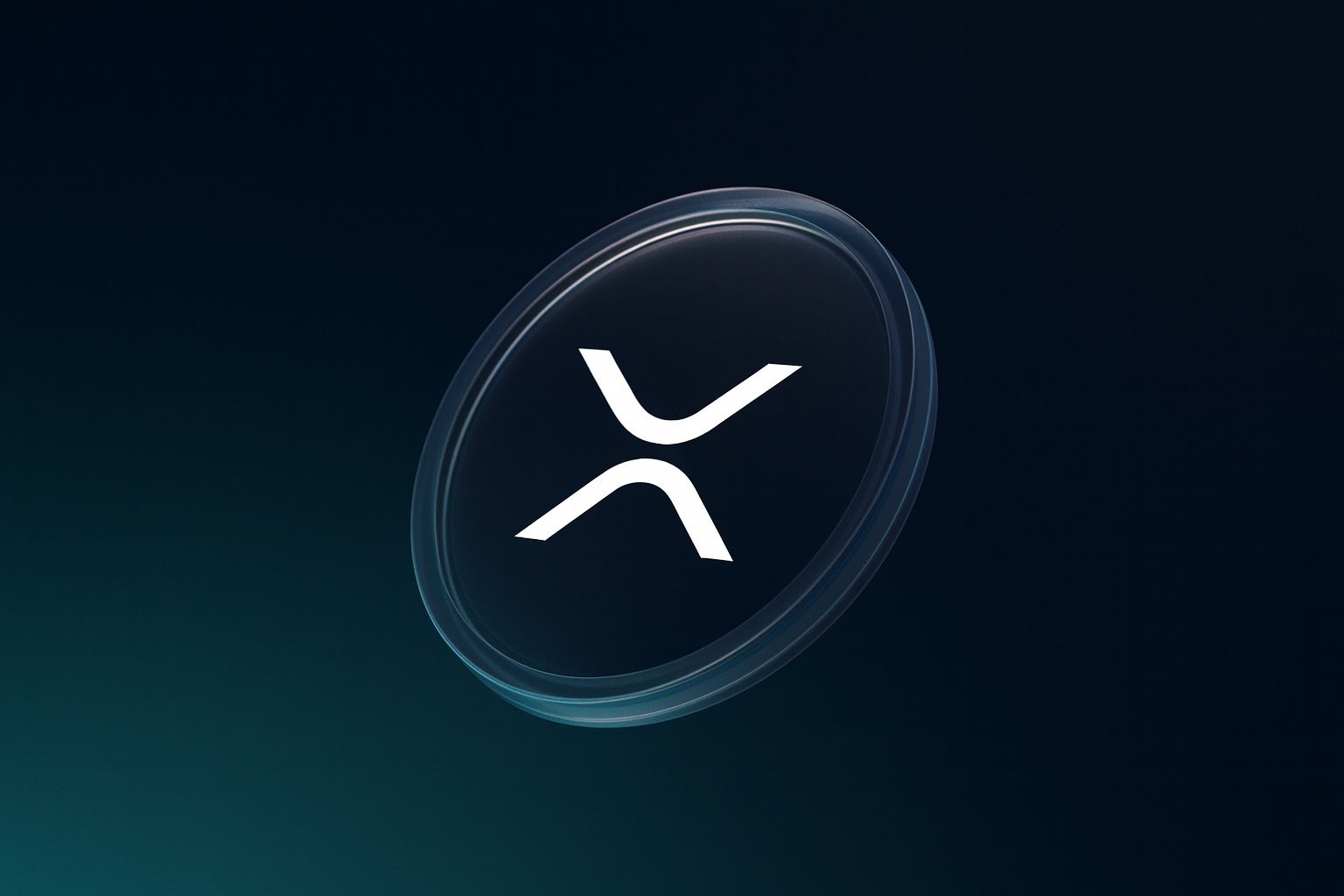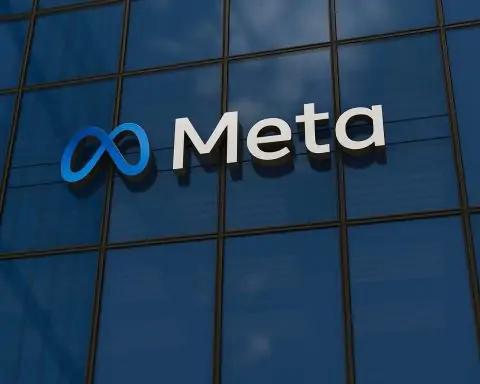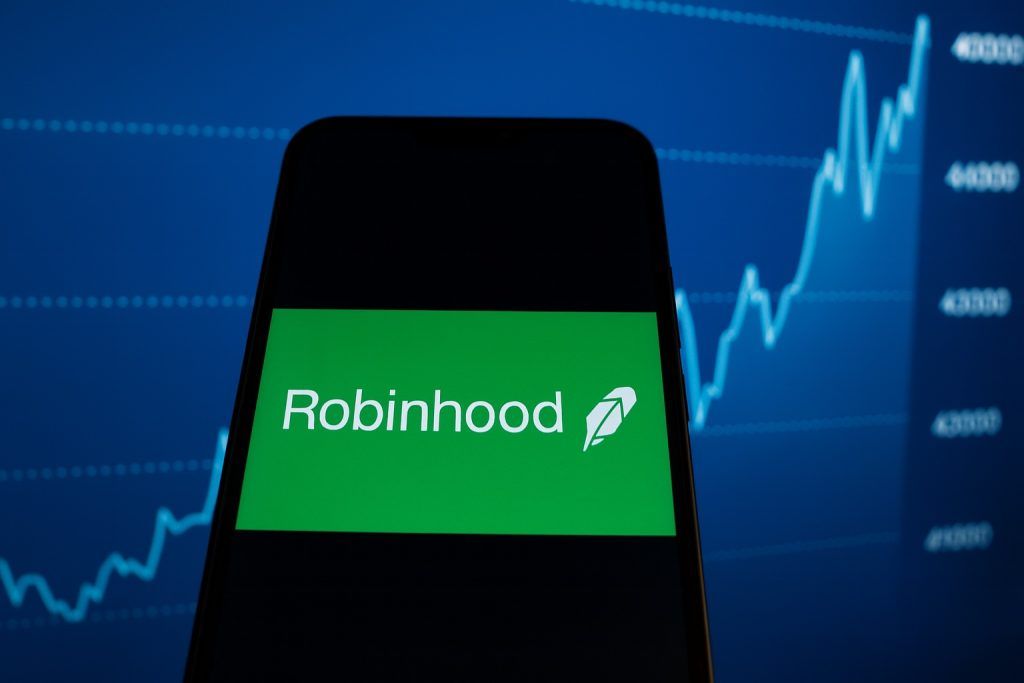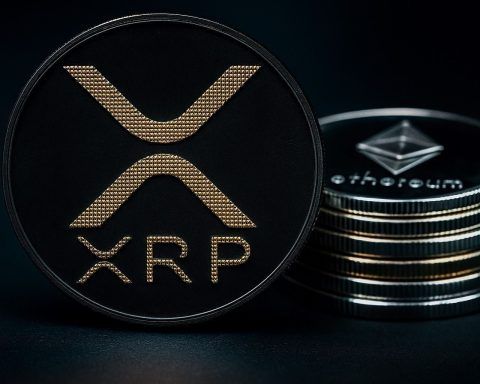- Current Price & Volatility: As of October 10, 2025, XRP trades around $2.85, roughly flat on the day after a roller-coaster week. It briefly topped $3.07 earlier in the week before plunging ~4% on Oct. 7 to about $2.85 amid a market-wide pullback [1]. Despite this dip, XRP remains up ~35% year-to-date and near multi-year highs [2] [3], outperforming Bitcoin’s YTD gain (~23%) in percentage terms [4].
- Whale Sell-Off Triggers Jitters: A single whale unloaded 160 million XRP (~$480 million) in early October, sparking a wave of caution [5]. Around the same time, over 320 million XRP (~$950 million) moved to exchanges [6] – seen as a sign that big holders might be poised to sell. These large transfers helped knock XRP below its psychological $3 support, liquidating about $500 million in long positions as stop-losses cascaded [7] [8]. Analysts warned that heavy whale profit-taking could destabilize the $2.80–$3.00 support zone in the short term.
- SEC Case Resolved – Clarity for XRP: A major overhang lifted in August 2025 when Ripple Labs and the U.S. SEC settled their lawsuit, ending the case with a $125 million fine and affirming XRP is not a security in public sales [9] [10]. This legal victory (building on a pivotal 2023 court ruling) removed regulatory uncertainty and led to U.S. exchanges confidently relisting XRP [11]. It also paved the way for institutional products: several firms promptly filed for the first U.S. spot XRP ETFs, aiming to offer regulated XRP investment funds [12].
- Spot XRP ETF Decision Looms:Multiple spot XRP ETF applications (from major asset managers like Grayscale, WisdomTree, and Franklin Templeton) face SEC decision deadlines around Oct. 17–25, 2025 [13] [14]. Market anticipation is feverish – Bloomberg analysts put approval odds near 100%, and prediction markets price in a ~99% chance [15] [16]. Observers call this a potential “binary event” for XRP, expecting that even one approval could “open the floodgates” of institutional money and turbocharge prices [17]. (Notably, a U.S. government shutdown briefly delayed ETF reviews, but the SEC is still expected to rule by mid/late October [18].) Traders are essentially “buckle up! XRP to $5 seems fair” ahead of the decision, one analyst quipped [19].
- Ripple’s Big Moves & Adoption: Ripple’s ecosystem is expanding, boosting XRP’s fundamentals. The company filed for a U.S. banking license (charter decision expected late October) to integrate crypto with traditional finance [20]. It also launched new products like a dollar-backed stablecoin (RLUSD) and inked fresh banking and payment partnerships, signaling growing real-world use for XRP [21]. In October, Ripple won a fintech award in London for its cross-border payment tech [22], underscoring industry recognition. Ripple’s On-Demand Liquidity (ODL) network shows surging transaction volumes in Asia (e.g. Japan) as banks like SBI deepen XRP adoption [23] [24] – providing a floor of organic demand for XRP as a bridge currency.
- Macro & Market Tailwinds: The broader crypto market’s “Uptober” rally set the stage for XRP’s early-month surge. Bitcoin roared to a new all-time high above $125,000 (boosting total crypto market cap past $4.2 trillion) before a profit-taking cooldown hit on Oct. 7 [25] [26]. XRP initially rode this risk-on wave (even briefly reclaiming the #3 market cap rank) but lagged Bitcoin and Ether during the breakout [27] [28]. Analysts note XRP lacks the spot ETF inflows that fueled BTC/ETH gains [29]. Still, macro signals remain favorable: markets expect Federal Reserve rate cuts in Q4 2025 and more pro-crypto policy support, which could boost risk assets [30]. Even U.S. politics gave XRP a surprise lift – on Oct. 6, former President Donald Trump touted “upgrading the ancient financial system” with crypto after meeting Ripple’s CEO, stoking speculation of a friendlier regulatory stance [31] [32].
- Analysts Split on Outlook:Expert predictions range widely. On the bullish end, Standard Chartered projects XRP could hit ~$5 by year-end 2025 (and ~$12+ by 2028) if ETFs launch and institutional demand surges [33]. Some crypto strategists see a path toward $4–$5 in the near term if key resistances break, with one Nasdaq commentator predicting ~$5.90 within three years amid favorable tailwinds [34] [35]. However, veteran trader Peter Brandt warns of a bearish scenario – a descending triangle breakdown that could send XRP plunging to ~$2.20 if support at ~$2.64 fails [36]. Many agree $3.30 and $3.70 are crucial levels to clear for a true bull revival [37] [38], while a drop below ~$2.80 would spell near-term trouble [39].
Current XRP Price and Recent Trends
XRP’s price is hovering near the $2.80–$2.90 range after a bout of high volatility in early October. On October 10, 2025, XRP traded around $2.85, roughly unchanged over 24 hours [40]. This steadying comes after a sharp mid-week pullback: on Oct. 7, XRP tumbled from ~$3.07 to $2.85 (~−4%) in a single day [41]. That drop caught bullish traders off guard, as XRP had been steadily climbing in late September and early October amid upbeat market sentiment.
Despite the recent chop, XRP is still significantly higher than just a month ago and remains one of 2025’s top-performing major cryptos. It is up about 38% year-to-date and a staggering ~440% versus this time last year (when it traded near $0.50) [42] [43]. In fact, XRP surged from under $0.60 in late 2024 to the $2.50–$3.00 range by September 2025 – a meteoric 380% rise over 12 months [44]. The coin even notched a multi-year high of $3.66 in July 2025 after positive legal news [45].
Short-term trend: Over the past week, XRP has oscillated around the key $3.00 level, reflecting a market at crossroads. It briefly regained $3.07 on Oct. 6 amid a broad crypto rally, then retested support near $2.85 after the Oct. 7 sell-off [46] [47]. Bulls have so far defended the $2.80-ish floor – a region that coincides with late-September lows and important technical support [48] [49]. By Oct. 8–10, trading volumes had tapered and XRP was consolidating quietly in the high-$2.80s [50] [51]. This suggests many traders are in “wait-and-see” mode, anticipating the next big catalyst. As one analyst put it, “a relief bounce alone isn’t enough – bulls must reclaim higher levels to regain momentum” [52] [53].
Weekly context: The first week of October began on a strong note across crypto (“Uptober”), which lifted XRP toward the $3+ zone. Market optimism saw Bitcoin soar to a new record (~$125K) and Ethereum and Solana jump to multi-month highs, carrying XRP along for part of the ride [54] [55]. XRP’s price rallied roughly +5% in early October, but unlike Bitcoin/Ether, it failed to break out to new highs and instead struggled to stay above $3 [56] [57]. By mid-week, profit-taking set in broadly and XRP actually lost ground against BTC and ETH. For example, in the first week of October, XRP’s price in USD rose ~5.4%, but XRP/BTC fell ~3.8% and XRP/ETH fell ~7%, reflecting underperformance versus those majors [58] [59]. This divergence underscores how dependent XRP’s next big move is on its own catalysts (like an ETF approval), since coins with approved ETFs attracted comparatively more inflows. As crypto lawyer Bill Morgan noted, Bitcoin and Ether currently “enjoy a market advantage” from having spot ETFs, whereas XRP is “struggling to stay above $3” without one [60] [61].
In summary, XRP enters mid-October trading in a tight range, having weathered a sudden drop but still lacking directional momentum. The stage is set for a potentially explosive move – up or down – as technical pressure builds and several high-stakes news events approach.
Major News & Developments Impacting XRP
Several fresh developments in early October 2025 are influencing XRP’s price trajectory. From whale trading and legal milestones to regulatory rumors and macro shifts, these factors have created both headwinds and tailwinds:
Legal Clarity & ETF Anticipation
Regulatory Overhang Cleared: After years of uncertainty, Ripple scored a definitive legal win that brightens XRP’s outlook. In August 2025, the SEC formally ended its lawsuit against Ripple, with both sides dropping remaining appeals [62] [63]. Ripple agreed to pay a $125 million fine, but importantly the settlement affirmed that XRP is not a security in secondary-market (exchange) sales [64]. This outcome – following a July 2023 court ruling in Ripple’s favor – removed the “dark cloud” over XRP and has been pivotal for its price [65] [66]. U.S. exchanges that had delisted XRP during the lawsuit quickly relisted the token once clarity was established, inviting waves of returning investors [67] [68]. The end of the case also signaled that XRP can be used and traded without fear of regulatory reprisal, a green light for broader adoption.
Spot XRP ETFs on the Horizon: Perhaps the most eagerly awaited catalyst now is the potential approval of spot XRP exchange-traded funds (ETFs) in the U.S. Following the legal victory, several major asset managers filed to launch XRP-backed ETFs [69]. The SEC’s decision window falls in mid-October 2025 – with deadlines clustered between October 17 and 25 for at least six applications (including proposals by Grayscale, Bitwise, WisdomTree, CoinShares, and Franklin Templeton) [70] [71]. Crypto markets are laser-focused on this timeline. Analysts have dubbed it a potential make-or-break moment (“binary event”) for XRP’s Q4 performance [72]. Optimism is high: top Bloomberg ETF experts Eric Balchunas and James Seyffart recently said they see a ~100% chance of approval for XRP ETFs [73] [74] – a striking vote of confidence. Prediction markets agree, pricing >95% odds that at least one XRP fund gets the green light [75]. The SEC itself has shown signs of warming up, having approved streamlined listing standards for crypto ETFs after Ripple’s court win [76].
Why does this matter? An ETF would allow institutional and retail investors to buy XRP through traditional stock exchanges, potentially unlocking billions of dollars of new demand. For context, when the first U.S. spot Bitcoin ETFs launched in late 2024, Bitcoin’s price skyrocketed ~169% over the following year [77]. Standard Chartered analysts similarly predict that a wave of XRP ETF approvals could propel XRP above $5 by December 2025 [78] [79]. They even see room for $12+ by 2028 as institutional adoption compounds [80] [81]. Other projections echo this bullish outlook: one analysis suggests $3–$8 billion of ETF inflows could double XRP’s market cap in short order [82] [83]. In essence, a spot ETF is viewed as a game-changer that could bring XRP into mainstream portfolios en masse.
That said, regulatory timing is tricky. The early October U.S. government shutdown temporarily paused the SEC’s review process, likely pushing any approvals or denials by a few weeks [84]. As of Oct. 10, the SEC is expected to rule by Oct. 18–25 for most filings [85]. Any further delays or a surprise rejection could disappoint traders and keep XRP range-bound a bit longer. But for now, hope is the prevailing sentiment – many are effectively “buying the rumor” of approval. Crypto social media is abuzz with speculation, with one crypto trader tweeting, “SEC expected to approve first spot $XRP ETF in 10 days… XRP to $5 seems fair. Buckle up!” [86].
Pro-Crypto Political Winds: In a surprising twist, U.S. politics injected fresh optimism into XRP this month. On October 6, former President Donald Trump – currently a presidential candidate – made headlines by praising crypto technology’s role in modernizing finance. In a speech (shortly after a meeting with Ripple’s CEO Brad Garlinghouse), Trump spoke of plans to “upgrade the ancient U.S. financial system using state-of-the-art crypto” [87] [88]. This was interpreted by the XRP community as an implicit nod to Ripple, given the context. The remarks, amplified by influencers on social media, fueled speculation that if Trump (or any pro-crypto candidate) gains power, regulatory attitudes towards projects like XRP could turn even more favorable [89] [90]. While no concrete policy change followed, the mere hint of high-level political support gave XRP a jolt of positive sentiment. It suggests growing bipartisan openness to crypto – e.g. Congress is advancing legislation to clarify crypto market rules, which already helped spike XRP +15% on news of a House bill’s passage [91] [92]. In short, the winds in Washington appear to be shifting in a direction that could benefit XRP in the long run, by removing legal ambiguity and encouraging institutional participation.
Whale Activity and Market Volatility
$500M “Ripple” Effect from Whale Sales: Large XRP holders (“whales”) have been flexing their influence, contributing to recent price swings. The most talked-about event was the sudden sale of 160 million XRP (nearly half a billion USD) from a single whale wallet in early October [93] [94]. This massive dump – first noted around Oct. 6 – sent shockwaves through the market. Traders immediately grew wary that if one big player was cashing out, others might follow. Indeed, blockchain trackers observed a flurry of whale transfers to exchanges totaling ~320 million XRP (≈$950 M) over 48 hours [95] [96]. Typically, when whales move coins onto exchange platforms, it’s interpreted as intent to sell. This triggered fears of a broader profit-taking wave, especially since XRP had run up substantially in previous weeks.
The impact was palpable on Oct. 7, when XRP broke below $3: stop-loss orders got triggered and leveraged long positions started liquidating en masse [97] [98]. Around $500 million worth of long futures contracts were wiped out across the crypto market as prices fell [99] [100]. This kind of cascading long squeeze accelerated XRP’s drop to the mid-$2.80s. Analysts noted it was a classic flush of “weak hands” after an overextended bullish run [101] [102]. The whale sell-off effectively poured cold water on XRP’s rally attempts, reinforcing a strong overhead resistance near $3 as traders turned more cautious [103] [104].
Market Sentiment Post-Selloff: In the immediate aftermath, the community was split on the whale’s motives. Was this a routine profit-taking or a sign of waning confidence in XRP? While some feared it signaled insiders exiting, others pointed out that XRP’s supply is relatively concentrated, so occasional large sales are not unusual [105]. Ripple—the company—still holds a significant trove of XRP but has been more transparent and steady in its programmed sales, so the finger pointed more toward early investors or other large holders [106]. The good news is that XRP found support around $2.85 despite the whale unloading [107] [108]. By Oct. 8, selling pressure eased and the token stabilized in a tight range, suggesting that many traders stepped back to assess rather than panic-sell further [109] [110].
Interestingly, on-chain data hinted that not all whale moves were bearish. Amid the turbulence, some big wallets were moving XRP into cold storage (off exchanges) – for instance, 250M XRP was transferred to a custodial wallet in late September, indicating long-term holding [111] [112]. Such accumulation by “strong hands” can counterbalance the short-term selloffs. Additionally, analytics firm Santiment noted that social media sentiment turned extremely bearish at the height of the drop, which often marks a contrarian buy signal as smarter money quietly buys the dip [113]. In essence, while whale sell-offs injected near-term volatility, they haven’t broken the broader uptrend. XRP still boasts a growing base of holders (over 4 million globally) [114] [115], and these committed investors can help absorb periodic selloffs.
Moving forward, whale behavior will remain a key wildcard. Traders are “whale watching” closely – any further large exchange inflows could foreshadow more dumps, whereas big outflows to wallets would suggest whales sitting tight. The recent episode underscores that XRP’s path to higher prices may not be a straight line; it could be punctuated by pockets of volatility whenever major holders make waves.
Ripple Labs Updates & Partnerships
On the corporate front, Ripple Labs (XRP’s steward) has been actively expanding its footprint, which bolsters the coin’s fundamental case:
- Bank Charter Ambitions: Ripple made headlines by seeking a U.S. banking license, a bold move to bridge crypto and traditional finance. In July 2025, it filed an application for a national bank charter, aiming to possibly offer banking services leveraging crypto (think crypto custody, payments, etc.). As of October, that application was under regulatory review, with a decision expected in late Oct. 2025 [116] [117]. If approved, Ripple would gain direct access to the U.S. banking system – a first for a crypto-native company. This could be transformative for XRP’s utility: a Ripple-owned bank could use XRP for settlement internally, offer XRP-based financial products, or integrate XRP with mainstream payment networks. It’s essentially a bid to legitimize and embed XRP in the heart of traditional finance. Analysts say a bank charter would be a “watershed” moment, signaling regulators’ comfort with crypto firms and potentially unlocking new XRP use cases in banking [118] [119]. Conversely, if denied, Ripple would likely continue partnering with banks from the outside, as it has for years. Either way, the very pursuit of a license shows Ripple’s intent to comply with regulations and broaden XRP’s reach.
- New Products (Stablecoin Launch): Ripple has also been innovating on the product side. Notably, it introduced a USD-pegged stablecoin called RLUSD in 2025 [120]. This stablecoin, fully backed by reserves, is designed to facilitate seamless transfers between fiat and XRP on Ripple’s network. By offering a Ripple-linked stablecoin, the company can entice institutions to trial crypto payments without direct XRP volatility exposure, while still ultimately using XRP for liquidity. This move is part of a broader strategy to increase XRP’s utility in settlements and DeFi. The fact that Ripple is rolling out new digital assets suggests confidence in its ecosystem despite past legal hurdles.
- Partnerships & Adoption: Ripple continues to sign partnerships with financial institutions worldwide. Its flagship product, On-Demand Liquidity (ODL) – which uses XRP to enable instant cross-border payments – is gaining traction. For instance, ODL volumes in Japan and other Asian corridors have been growing steadily [121]. Major partner SBI Holdings (a Japanese financial giant) even expanded an XRP lending program recently [122], indicating growing demand for XRP in lending and remittance. Ripple’s network now counts hundreds of banks and payment providers piloting or using its tech in regions like Southeast Asia, Europe, and the Middle East. Each new corridor potentially drives incremental demand for XRP as a bridge asset. Moreover, some fintech firms have hinted at adding XRP to their corporate treasuries as a reserve asset [123] – a sign of confidence in XRP’s long-term value. All these developments strengthen the fundamental underpinning of XRP’s price: real-world usage. The more XRP is used in actual transactions (as opposed to pure speculation), the more intrinsic value and price support it may have.
- Industry Recognition: Underscoring its progress, Ripple received industry accolades in October. It won the “Best Initiative in Digital Currencies” award at the PAY360 FinTech Awards in London on Oct. 1 [124]. Ripple’s UK Managing Director called it “a huge endorsement” of crypto-powered payments’ real-world utility [125]. Such recognition not only boosts Ripple’s credibility but also highlights XRP’s evolving perception – from a controversial token under lawsuit to a leading solution for modernizing finance. It’s a narrative shift that could attract more institutional participants to the XRP ecosystem over time.
In summary, Ripple’s recent moves demonstrate that the company is pushing full steam ahead to grow XRP’s use cases. The end of the SEC saga has unleashed a wave of activity: pursuing a bank license, launching new products, securing awards, and expanding ODL partnerships. These fundamental strides create a positive backdrop for XRP’s value, even if price action in the immediate term is dominated by technical trading and speculation.
Macroeconomic & Broader Crypto Factors
XRP’s price doesn’t exist in a vacuum – broader market and economic forces have also played a role:
- “Uptober” Rally & Altcoin Rotation: Early October lived up to its bullish reputation for crypto markets. A surge of optimism (nicknamed “Uptober”) lifted Bitcoin to all-time highs (~$125.7K) and pushed the total crypto market cap above $4.27 trillion [126]. Major altcoins like Ether and Solana saw outsized gains as well [127]. XRP benefited from this upswing, rising back above $3 on Oct. 6 amid the risk-on wave [128]. However, when profit-taking hit Bitcoin and others, XRP too retraced – and in fact retraced more sharply. One reason is that capital was rotating into assets with concrete catalysts (like BTC/ETH with ETFs), whereas XRP lacked an immediate catalyst during that rally [129] [130]. Indeed, analysts noted XRP underperformed peers in the breakout: for the month of October up to that point, XRP was up ~5% USD, but had lost value against BTC, ETH, and SOL [131]. This laggard behavior underscores that while overall crypto sentiment can buoy XRP, it may not soar until its specific narrative (e.g. an XRP ETF) comes to fruition. The takeaway: broader market rallies help XRP, but the big gains may come when XRP-specific news hits (since some investors held back, preferring assets with clearer near-term drivers).
- Interest Rates & Liquidity: On the macroeconomic front, conditions are tentatively turning more favorable for crypto. Markets are increasingly expecting that the U.S. Federal Reserve will start cutting interest rates in Q4 2025 amid signs of slowing inflation [132]. Lower rates generally boost liquidity and risk appetite, which historically benefits crypto assets. Additionally, an extended U.S. government budget impasse led to a brief federal shutdown in early October, which paradoxically made markets optimistic that the Fed would lean dovish (avoiding shocks during political turmoil) [133]. Such expectations of easier monetary policy have contributed to a weaker dollar and more funds flowing into alternative assets like crypto. XRP, positioned as a bridge currency, could indirectly gain if global liquidity expands and remittances/FX markets see more activity under looser monetary conditions.
- Crypto Regulations & Competing Coins: Globally, crypto regulation remains a double-edged sword. On one hand, clearer rules (like Europe’s MiCA framework or proposed U.S. bills) could legitimize crypto investments and encourage institutions to allocate to assets like XRP. The U.S. is actively working on a digital asset market structure law; progress there tends to give XRP extra boosts (as seen when a House bill progress coincided with XRP’s 15% jump) [134]. On the other hand, any negative regulatory surprise – say, stricter rules on altcoins or an SEC delay on ETFs – could hurt sentiment. XRP’s historical sensitivity to regulation is high, given its use case straddles the line between crypto and banking. So traders are keeping one eye on lawmakers and regulators for any signals.
Finally, it’s worth noting competition and correlation: XRP often moves in tandem with other payment-focused cryptos, especially Stellar (XLM) due to their similar use cases [135]. If XRP rallies on an ETF approval or other catalyst, XLM and a basket of “altcoin ETF hopefuls” (like Solana, Cardano, etc.) might also surge in sympathy [136]. Conversely, stagnation in XRP could dampen the broader altcoin sentiment given XRP’s large market cap. Additionally, competition from stablecoins and other blockchain payment systems means XRP must continue to innovate to justify its market position [137]. So far, Ripple’s efforts and the community’s support suggest XRP is holding its ground, but macro and industry trends will remain important background factors in its price journey.
Technical Analysis: Key Levels, Trends & Indicators
XRP’s price charts reveal a market at a technical inflection point. After months of range-bound action, pressure is building toward a breakout – but the direction depends on how price reacts at critical levels. Here’s a rundown of the technical landscape:
Trading Range & Chart Pattern: Over late August through early October, XRP has been coiling into a triangular consolidation pattern. Analysts point to an ascending triangle (or arguably a symmetrical triangle) forming, characterized by higher lows and a flat top around $3.00 [138] [139]. In other words, each pullback has bottomed at a slightly higher level (signaling buyers stepping in sooner), while rallies have been capped around the same resistance zone (~$3 to $3.30). This pattern reflects contracting volatility – XRP has been bouncing between about $2.80 and $3.20, with that range narrowing over time. Notably, XRP’s 20-day, 50-day, and 100-day moving averages have all converged in the high-$2.90s during this squeeze [140]. Such moving average compression is often a precursor to a decisive move, as it indicates the market is undecided and “wound up” like a spring [141]. As one report put it, “the price charts show a coiled spring” heading into mid-October [142].
Traders like EGRAG Crypto observe that XRP’s triangle is about 70–80% complete, meaning a breakout (up or down) is likely due by late October [143] [144]. In similar past setups, XRP often saw a sharp move once it broke out of the narrowing range. On-balance volume (OBV) trends offer a clue: OBV has been ticking upward even as price stayed flat [145], suggesting accumulation (buying pressure) quietly building. This bullish divergence hints that buyers may be loading up in expectation of a rally [146]. However, confirmation will only come with a price breakout itself.
Support Levels to Watch: On the downside, $2.80–$2.85 is the first key support zone. This band (the triangle’s lower trendline) held during the recent sell-off – XRP bounced off ~$2.85 on Oct. 7-8 [147] [148]. Just below lies the 100-day exponential moving average (EMA) around $2.80, adding technical fortification [149]. If XRP were to close decisively under $2.80, technicians warn of a deeper pullback. The next major support would be near ~$2.63 (where the 200-day EMA sits) [150]. Veteran chartist Peter Brandt even identified ~$2.64 as the neckline of a potential descending triangle; a breakdown under that could target $2.20 as a bearish objective [151] [152]. In short, $2.60s is a do-or-die support – failing there would break the series of higher lows and signal a trend reversal to the downside. Below $2.60, the low-$2’s come into view (e.g. previous demand around $2.30 from early summer).
For now, bulls have successfully defended the high-$2.70s on multiple recent tests. Also encouraging, momentum indicators reached oversold levels during the dip, which could attract buyers. The daily Relative Strength Index (RSI) on Oct. 10 fell under 30 (a classic oversold threshold) [153], indicating the sell-off may have been overdone. A rebound from oversold conditions could help XRP hold support, as it has in past pullbacks.
Resistance Levels & Breakout Triggers: On the upside, $3.00–$3.10 is the first hurdle – essentially the top of the recent consolidation. Bulls attempted to break past $3.05 on a rally earlier in October but were met with profit-taking [154]. Just above, around $3.20, lies the upper bound of the triangle pattern and recent local highs [155] [156]. A clear breakout above ~$3.20 (with strong volume) would be a significant bullish signal, likely inviting technical traders to jump in long [157]. Analysts say a confirmed breach of $3.20 could “open the door toward $3.35–$3.60” in the short run [158] [159].
However, the true line in the sand is around $3.30–$3.35. That area marked XRP’s peak in late August (~$3.30–$3.40) and has acted as a “market battleground” between bulls and bears [160]. It roughly coincides with the 2018 cycle high (~$3.30) which XRP failed to surpass in 2021’s rally, making it a multi-year resistance. Many analysts assert XRP must close above $3.30 to declare an end to its long-term downtrend [161] [162]. A break there would mean a higher high beyond the summer’s peak, putting XRP in a bullish posture on the weekly chart.
Beyond $3.30, the next major target is around $3.70–$3.75. This region is hugely significant: approximately $3.70 is the neckline of a giant inverse head-and-shoulders (H&S) pattern visible on XRP’s long-term chart [163] [164]. It also happens to be near XRP’s highest price since 2018 (the July 2025 spike to $3.66). Chartists consider an inverse H&S a bullish reversal formation – if XRP can rally through ~$3.70 and print a new multi-year high, it would confirm the pattern and potentially trigger a fresh uptrend. Some technicians project that breaking the $3.70 neckline could “pave the way for $4.00–$4.20” fairly quickly [165] [166], with $4.80 as a next resistance (a level derived from H&S pattern measuring techniques) [167] [168].
In summary, XRP’s chart has well-defined tripwires. A rally above ~$3.30, and especially $3.70, would likely unleash a wave of buying and momentum algos – in effect, confirming the bullish breakout that investors have been waiting for. Until then, price may continue ping-ponging in the high-$2 to low-$3 range. Bulls should remain cautious not to “front-run” the breakout: as one trader noted, “bullish sentiment dominates… but analysts urge caution until a decisive breakout above the $3.70 neckline” is achieved [169] [170]. False starts are possible, so watching volume and confirmation is key.
Other Technical Indicators: Aside from price levels, a few technical indicators are worth mentioning:
- Relative Strength Index (RSI): On higher timeframes, XRP’s RSI shows room to run. During the July 2025 peak, weekly RSI hit over 80 (overbought), but recent consolidation brought it back to neutral. Notably, some analysts watch a two-week RSI threshold around 77 – as long as XRP’s momentum stays below extreme levels like that, the uptrend may sustain without overheating [171] [172]. Analyst Egrag highlights that a break above 77 on the 2-week RSI could mark a cycle top, but so far XRP has only had one peak; a second peak above that threshold (if it occurs in coming months) might precede a larger correction [173]. For now, daily RSI bouncing from ~28 back upward suggests a short-term momentum reset that gives bulls a chance to rally again.
- Moving Averages: As mentioned, the 50-day and 100-day moving averages are clustering around ~$2.95, effectively flat [174]. The 200-day MA is rising through the mid-$2.60s. XRP is above all these key MAs, which generally means the intermediate trend is still positive (price > 200-day MA is a common bull criterion). The convergence of MAs often precedes a big move – think of it like bands of support/resistance compressing. Traders will watch for a “golden cross” or similar signals; for instance, if shorter MAs cross above longer ones during an upmove, it could add confidence in the breakout. Conversely, slipping below the 100-day or 200-day MA would strengthen the bearish case.
- Volume & Open Interest: Volume has been somewhat muted during the consolidation, which is normal when price ranges tighten. Interestingly though, open interest (OI) in XRP futures jumped to ~$3 billion by Oct. 6 – up from ~$2.3B in late September [175] [176]. This indicates many traders have placed leveraged bets on an impending big move. However, a caution: while OI surged, trading volumes actually dipped ~11% in early October [177] [178], suggesting a lot of positions but not much actual spot buying yet. This scenario can lead to a volatile resolution – if price breaks out, those piled-on positions could fuel a short squeeze or long squeeze. As one analyst noted, “many traders have placed their bets, but the actual buying pressure has yet to materialize” [179] [180]. When XRP finally does move beyond the $3 zone decisively, expect volumes to spike and OI to start unwinding as the market picks a direction.
In summary, XRP’s technical picture is one of a coiling spring: relatively low volatility, well-defined support/resistance, and a market eagerly awaiting a breakout trigger (like an ETF decision or other catalyst) to resolve the stalemate. Traders should keep a close eye on the $2.80 support and $3.20/$3.30 resistance in the immediate term. A credible push beyond the upper barrier, especially accompanied by volume expansion and improving RSI, would likely mark the start of XRP’s next significant rally. Until then, caution and range-trading strategies prevail.
Fundamental Analysis: Adoption, Utility & Network Health
Beyond the charts, XRP’s fundamentals and real-world utility provide context for its valuation. Here are the key fundamental factors affecting XRP:
Core Use Case – Cross-Border Payments: XRP is the native token of the XRP Ledger, which Ripple Labs utilizes for its cross-border payment solutions. XRP’s primary use case is to serve as a bridge currency for international transactions, allowing value to be sent across borders quickly and cheaply. This value proposition – fast settlement and liquidity provisioning – underpins Ripple’s flagship product On-Demand Liquidity (ODL). With ODL, a bank or remittance provider can convert local currency to XRP, send XRP abroad in seconds, and convert it to the destination currency, all in one flow. This eliminates the need for pre-funded nostro/vostro accounts and can significantly cut transaction costs and times. Over 2024–2025, Ripple has onboarded numerous financial institutions to ODL, especially in Asia-Pacific, the Middle East, and Latin America. For example, Tranglo in Southeast Asia and SBI Remit in Japan use ODL for remittances, leveraging XRP’s speed and lower fees. As more volume flows through ODL corridors, demand for XRP liquidity grows accordingly.
Recent data suggests ODL volumes have been rising. Ripple noted growth in key corridors: e.g., Japan-Philippines remittances via XRP have increased, and new corridors (like Middle East-India) are being explored. In late 2025, Ripple even announced that over half of its transactions on some routes are now done through ODL, indicating strong uptake. This kind of fundamental usage provides a steady baseline demand for XRP that is relatively price-insensitive (people use it because it’s needed for the service, not just to speculate). Indeed, analysts say real-world usage “provides a floor of organic demand” underneath XRP [181] [182]. The more companies rely on XRP for business needs, the more resilient its price can be in the face of speculative swings.
Network Activity & Decentralization: The XRP Ledger itself continues to operate efficiently, handling ~1.2 million transactions per day on average. Transaction costs on the ledger remain fractions of a penny, and settlement times are ~3-5 seconds – metrics that compare favorably to many other blockchains. The ledger’s consensus mechanism (unique node list) has proven capable of running without major downtime. Over the years, the XRP Ledger has become more decentralized, with Ripple now running only a minority of validator nodes. A diverse set of validators (universities, businesses, community members) help validate transactions, which alleviates past centralization critiques. In 2025, the network also introduced new features like sidechains (through projects like Hooks and the EVM-compatible sidechain) to broaden its capabilities (e.g., enabling smart contracts). These enhancements could potentially expand XRP’s use cases beyond payments (for example, into DeFi or NFTs), although those are nascent for now.
One notable fundamental change: Ripple’s escrow releases. Ripple holds a large escrow of XRP and has been releasing 1 billion XRP monthly, but typically re-locks a majority of it. In 2025, Ripple indicated it would sell less XRP from escrow than in prior years, partly because it can fund operations from other revenues (and perhaps to be prudent post-SEC case). Ripple’s disciplined approach to XRP sales has reassured investors that the supply overhang is being managed transparently. In Q3 2025, Ripple sold XRP mostly to institutions (for ODL liquidity) and not into retail markets, which supports price stability. Any signals that Ripple might accelerate sales could be seen as a negative, whereas continued restraint or new buybacks (if they ever chose to remove supply) would be positive.
Ecosystem Developments & Partnerships: Ripple’s strategy to drive XRP adoption involves forging partnerships across the financial industry. To date, 100+ banks, remittance companies, and fintechs have tested or use RippleNet (Ripple’s network, which can use XRP via ODL). Some high-profile partners include Banco Santander, Bank of America (in advisory roles), MoneyGram (previously), Western Union (pilot tests), and many smaller payment firms. Each partner that integrates ODL potentially channels transaction volume through XRP. Ripple sweetens these deals by offering incentives (sometimes providing XRP for trial liquidity).
Additionally, Ripple has expanded into CBDCs (central bank digital currencies), pitching its ledger for sovereign digital currency projects. It’s working with entities like the Republic of Palau and Montenegro’s central bank on CBDC pilots. While not directly XRP-related, a successful CBDC on XRPL could indirectly benefit network effect and credibility.
Another fundamental piece is developer activity. The XRP Ledger community has been active in building tooling and exploring new uses. For instance, there are XRP-based stablecoins (like the aforementioned RLUSD) and tokens issued on XRPL. The more vibrant the development community, the more innovation that could drive value to XRP long-term. Ripple’s XRPL Grants program has been funding startups and projects on the ledger to encourage this.
Market Position & Competition: XRP is currently among the top 5 cryptocurrencies by market capitalization, often jockeying for the #3 spot (behind only Bitcoin and Ethereum) with a market cap around $150–170 billion [183] [184]. Its closest rivals in payments are Stellar (XLM), which was started by Ripple’s co-founder and targets similar use cases, and stablecoins like USDC or USDT that facilitate cross-border transfers on other networks. While stablecoins dominate dollar liquidity for retail users, XRP’s edge is in being a neutral bridge asset for any currency and having an established network of institutional users via RippleNet. As long as XRP can maintain faster speeds and lower fees than most networks, and if regulators treat it favorably (which they now are post-lawsuit), it stands to keep its niche.
That said, competition is real: if, for example, banks decide to use private blockchain networks or other cryptocurrencies for settlement, XRP would need to continuously prove its value. Ripple’s pursuit of a banking license and relentless partnership drive can be seen as efforts to entrench XRP in the global financial plumbing before competitors catch up. The network effect Ripple has cultivated (banks already comfortable with RippleNet) is a big advantage.
Legal & Regulatory Status: From a fundamental risk perspective, regulation remains crucial. The outcome of the SEC case was a major de-risking event – XRP is now effectively acknowledged (by precedent) as a non-security commodity when traded on exchanges [185] [186]. This clarity has allowed U.S. institutions that were previously hands-off to engage with XRP. For instance, after the 2023 ruling, Coinbase and Kraken relisted XRP immediately [187], and investment firms started considering XRP products. By 2025, multiple ETPs (exchange traded products) in Europe and elsewhere have been launched for XRP (one product, “XRPR” by Osprey, saw ~$38M in first-day volume in September [188]). These are signs of normalization – XRP is no longer a legal pariah. However, it will be important to watch if any new regulations (like stablecoin laws or new definitions of crypto commodities) could impact XRP. Thus far, it appears XRP is benefiting from a wave of pro-clarity sentiment among lawmakers, with even the CFTC’s stance leaning towards viewing large-cap cryptos as commodities.
In summary, XRP’s fundamentals present a picture of growing utility and integration into real finance. Its network is healthy, usage (especially via Ripple’s ODL) is rising, and the company behind it is actively fostering growth. With the legal stamp of approval in the U.S., doors that were once closed are opening. These fundamental aspects suggest that XRP’s valuation is increasingly supported by more than just speculation – there’s a backbone of real demand and a vision for broader adoption. This doesn’t make XRP immune to volatility, but it means the investment narrative now includes “XRP as a viable asset for global payments” alongside the usual crypto market cycles.
Price Forecasts & Expert Outlook
What’s next for XRP’s price? Experts and analysts have been issuing a wide range of forecasts – from conservative to sky-high – reflecting the coin’s unique potential and risks at this juncture. Here’s a roundup of notable predictions and perspectives:
- Standard Chartered: $5+ by Year-End: Perhaps the most headline-grabbing forecast comes from Standard Chartered, the global banking giant. In a recent research note, their analysts projected that if regulatory clarity persists and spot ETFs get approved, XRP could rally to ~$5.00 or higher by the end of 2025 [189]. They further estimated ~$12.50 by 2028 under a continued adoption scenario [190]. These targets are built on the premise that XRP will attract significant institutional inflows (via ETFs and funds) and see expanding usage in payments. A ~$5 price would equate to roughly a $300B market cap – lofty, but plausible if crypto as a whole grows and XRP captures a slice of global remittances. Importantly, Standard Chartered’s crypto research team has a bullish stance broadly (they also predicted big things for Bitcoin), so their XRP call aligns with an expectation of a multi-year crypto upcycle.
- Bloomberg & Polymarket Sentiment: As noted earlier, Bloomberg’s ETF analysts Balchunas and Seyffart are extremely optimistic on the ETF approval, essentially calling it a done deal [191] [192]. While they didn’t give a price target, the implication is that XRP’s price could appreciate significantly on an approval, just as Bitcoin’s did. Additionally, Polymarket betting odds (with real money at stake) give XRP ETFs a ~99% chance – indirectly signaling that many expect a price rally to follow [193]. Some traders are pre-positioning for this outcome; per CoinShares data, XRP investment products have seen increased inflows ahead of the decision [194], which suggests savvy money is accumulating XRP now in anticipation of a jump.
- Crypto Analysts’ Near-Term Targets: Within the crypto trading community, a cluster of analysts see XRP headed to the $4–$5 range if certain technical and news triggers hit. For instance, chartist Kamran Asghar highlights an inverse head-and-shoulders pattern – if XRP breaks above the ~$3.70 neckline, he thinks it could “pave the way” to $4.00–$4.20 fairly quickly [195] [196]. Another strategist (on Nasdaq.com) argued that within 2–3 years, XRP could roughly double to ~$5.90, citing the favorable court outcome and Ripple’s growing ecosystem [197] [198]. Even more bullish, some crypto influencers on X (Twitter) like Dark Defender and Amon (Amonbuy) have floated targets around $5.50–$5.89 in the event of a confirmed breakout and ETF-driven surge [199] [200] [201]. These specific figures often come from technical projections (like the height of a chart pattern or Fibonacci extensions). They suggest that if XRP clears its multi-year resistance, pent-up momentum could carry it to new highs not seen since 2018.
- Ultra-Bull Case – $10 and beyond: Some long-term XRP believers envision even larger gains. For example, Jake Claver of Digital Ascension Group mused on a podcast that a combination of a U.S. spot ETF, broad crypto bull market, and new utility could propel XRP to $10–$13 by end of 2025, with $20–$25 as a stretch goal [202] [203]. Similarly, popular analyst EGRAG Crypto has an eye-popping target of $27 over the long term, based on historical fractals and network growth [204] [205]. These upper-end predictions admittedly require a “perfect storm” of catalysts: not just ETFs and adoption, but perhaps a scenario where XRP becomes embedded in banking systems or global liquidity flows at scale. A price in the double digits would mean XRP’s market cap challenging or exceeding its 2018 peak (~$180B at the time) and possibly putting it on par with Ethereum’s size today. While not impossible in a roaring bull market, such forecasts should be taken with a grain of salt – they represent best-case scenarios if everything goes right.
- Bearish/Pessimistic Views: On the other side of the coin, plenty of analysts urge caution. Peter Brandt, known for calling past crypto tops, warns that XRP’s rally could fizzle if it doesn’t break out soon. He identified a bearish descending triangle and said a failure of support could lead to $2.20 or even lower [206]. His view is basically that XRP has been making lower highs (since the July $3.66 peak, each subsequent peak was under $3.30) and that pattern spells vulnerability. If Bitcoin’s rally stalls or if the ETF news disappoints, XRP could easily slide back to the mid-$2s or worse. Other skeptics note that XRP’s trading volume has been fading and whale selling is a concern [207] [208]. A recent CoinCentral report said “big breakouts feel unlikely unless major catalysts appear,” and without an ETF, XRP might just stay range-bound between roughly $2.50 and $3.50 [209] [210]. Essentially, these analysts see XRP chopping sideways – or even grinding down – if the bulls fail to deliver a narrative to excite markets.
- Risk Factors: Even some bullish commentators acknowledge a few risk factors that could derail XRP’s advance. Macro-economic shifts are one: if inflation flares up or the Fed reverses course to tighten policy, crypto at large could slump, dragging XRP with it [211]. Also, competition from other payment tokens or technologies could limit upside – e.g. if banks favor stablecoins or CBDCs over XRP for cross-border needs, that could cap demand [212]. Lastly, while the SEC case is settled, the regulatory climate can always produce surprises (new enforcement or rules for crypto intermediaries, etc.). So while the base case for many is bullish, prudent investors keep these caveats in mind.
What are traders saying now? At the moment, sentiment on social media and forums is notably bullish – perhaps even excessively so, according to some contrarians. Excitement around the ETF decision is high, and many retail traders are “diamond-handing” XRP expecting a big pop. However, seasoned analysts often counter that patience is key. One remarked that despite the upbeat mood, “talk is cheap; the market wants proof” in the form of a real technical breakout [213] [214]. In practical terms, that means until XRP actually closes above those pivotal levels (~$3.30, $3.70), some traders are holding off on large leveraged longs.
In summary, the short-term consensus seems to be that if XRP gets an ETF catalyst or a strong chart breakout, a move to the mid-$4s is achievable, and possibly $5+ with momentum. The long-term vision by optimists sees two-figure prices, but that likely hinges on broader crypto growth and XRP achieving a kind of mainstream finance integration that is still on the horizon. Meanwhile, realists caution that without an imminent catalyst, XRP may continue its pattern of frustrating consolidation, and downside risks (to ~$2.50 or lower) exist if the market turns risk-off or if bulls fail to show up.
All eyes are now on mid-to-late October’s news. It’s not often that a single regulatory decision (the SEC’s ETF ruling) has the power to so dramatically alter a coin’s fortunes, but XRP is in that rare position. As such, expect elevated volatility around those dates. Traders and investors should brace for either a euphoric breakout or a volatile let-down – and perhaps even both in sequence. In the long run, however, the steady progress in fundamentals and the closure of the SEC saga have put XRP on much firmer footing than it was a year or two ago. That fact is not lost on analysts, which is why even the conservative forecasts tend to have XRP maintaining a higher baseline value going forward than it did pre-2023.
XRP vs. Bitcoin & Ethereum: Comparative Performance
It’s instructive to compare XRP’s performance and prospects against the two crypto heavyweights, Bitcoin (BTC) and Ethereum (ETH), as well as against the broader altcoin pack:
2025 Year-to-Date Performance: Up to early October 2025, XRP has outpaced Bitcoin and Ethereum in percentage gains. XRP is roughly +35% YTD, versus Bitcoin’s ~+23% and Ethereum’s ~+20% [215] [216]. This outperformance partly reflects XRP bouncing back from a lower base (it was suppressed by the lawsuit until mid-2023, then rocketed after the legal win). By contrast, Bitcoin and Ether were closer to their prior highs at the start of the year. That said, in absolute terms Bitcoin added far more market value due to its size – BTC’s market cap climbed hundreds of billions, while XRP’s increase was on a smaller base.
Market Cap & Rank: Bitcoin remains the dominant crypto, with a market cap around $2.3 trillion as of Oct. 10 and a market dominance of ~54% [217] [218]. Ethereum sits at #2 (~$500B market cap). XRP, at around $150–170 billion market cap, is currently vying with BNB for the #3 spot [219] [220]. In late September, a strong XRP rally actually propelled it briefly above BNB and even USDT into the #3 position [221] [222], which was the first time since 2018 that XRP held the bronze medal. However, the early-October dip knocked it back to #5 (below BTC, ETH, USDT, and BNB) [223] [224]. This shuffle shows XRP is on the cusp – a few percentage points of price change can move it up or down in the rankings. If XRP’s price rises back above ~$3.30, it would likely reclaim #3 (given BNB’s own price trajectory). Many in the XRP community see flipping Ethereum (#2) as a long-shot goal if XRP truly went on a tear, but with ETH’s market cap roughly 3x larger, XRP would need to reach ~$8-10 to challenge ETH’s size.
All-Time Highs: Bitcoin and Ethereum have already surpassed their 2021 all-time highs during the 2025 rally. Bitcoin’s prior ATH was ~$69k (Nov 2021), and it’s now around $122k (recent ATH ~$125.7k) [225]. Ethereum’s previous ATH was ~$4.8k, and it crossed above $5k this year. In contrast, XRP’s all-time high remains ~$3.84 (set in January 2018) [226] [227]. XRP is one of the few top assets that did not set a new ATH in the 2020-2021 bull run – it topped out near $1.96 in April 2021, well under the 2018 peak, mainly due to the SEC case dampening momentum. Even with 2023-2025’s resurgence, XRP’s high of ~$3.66 in July 2025 just barely missed the record [228]. This means XRP has yet to enter price “discovery” above its old highs, whereas BTC and ETH are in blue sky territory. Some traders view this as a bullish setup – XRP could “catch up” to make a new ATH if conditions allow. Others note it implies XRP has more overhead resistance (bagholders from 2018 might sell near $3-4). Regardless, crossing $3.84 will be a psychological victory for XRP holders, and a move beyond that could invite significant FOMO buying as it would mark uncharted price territory.
Volatility Profile: XRP historically has higher volatility than BTC or even ETH. It tends to have explosive moves (both up and down) concentrated in short time frames, often tied to news. For example, when the initial court ruling broke in July 2023, XRP spiked over +70% in one day [229] [230]. Bitcoin and Ether, being larger and more widely held, usually move in steadier trends and are heavily influenced by macro factors. XRP can trade somewhat independently at times – for instance, regulatory news that is specific to XRP can cause it to diverge from BTC/ETH’s trend. We saw hints of that in October: while BTC hit new highs, XRP lagged and even fell vs BTC (as discussed, likely due to the ETF disparity) [231]. This suggests XRP’s correlation with Bitcoin can weaken when XRP-specific catalysts (or lack thereof) dominate. If an XRP ETF is approved, it wouldn’t be surprising to see XRP massively outperform BTC/ETH in the short run, as a re-rating happens based on the new inflows. Conversely, if the decision is disappointing, XRP could underperform while BTC/ETH maybe remain more stable, given BTC now has its ETFs live which provide a buy-the-dip dynamic.
Institutional Involvement: One big difference between XRP and BTC/ETH is the level of institutional adoption. Bitcoin has seen huge institutional buying (e.g., ETFs holding ~7% of BTC supply [232], corporations like MicroStrategy adding BTC to treasury, etc.), and Ethereum has gotten institutional exposure through futures, funds, and its pivotal role in DeFi. XRP’s institutional uptake was stymied by the SEC case for years. Now, post-lawsuit, we’re just beginning to see Wall Street dabble in XRP. The potential approval of multiple XRP ETFs could be a watershed that puts XRP on many institutions’ radar (some analysts think $3–8B could flow into XRP ETFs in year one [233] [234]). If that happens, XRP could start behaving a bit more like BTC/ETH in terms of having a solid institutional bid. Until then, XRP’s price may still be driven largely by retail and crypto-native traders (including whales).
Use Case and Narrative: The narratives driving each coin also differ:
- Bitcoin’s narrative is digital gold, inflation hedge, store-of-value, and now increasingly an institutional asset (with ETFs).
- Ethereum’s narrative is the decentralized supercomputer, backbone of DeFi/NFTs, with value derived from network usage (fees, burning mechanism, etc.).
- XRP’s narrative is banking and payments efficiency, a facilitator of cross-border money transfers, with value from utility in moving liquidity. This means XRP’s fortunes can sometimes be tied to news in fintech, banking, or even macroeconomic flows (e.g., if remittances increase or if banks seek crypto solutions due to high costs, etc.).
Interestingly, XRP’s success could be somewhat uncorrelated to Bitcoin’s in the very long term. For example, if central banks or large banks started using XRP for settlements, that’s a very different adoption path than Bitcoin’s digital gold path. In the near term, however, the entire crypto market sentiment still plays a big role – in bear markets, XRP will likely fall alongside others, and in bull markets, it rides the tide (with its own bursts, as seen this year).
Competition within Crypto: Besides BTC and ETH, XRP also competes with other altcoins for investor capital. In the recent rally, Solana (SOL) had a huge run (up 7% more than XRP in early October) [235] [236], partly due to Solana-related funds and products attracting money. Cardano (ADA), Polygon (MATIC), and others are also out there, though their use cases differ. For payment-centric cryptos, Stellar (XLM), Algorand (ALGO) (to some extent with its payments focus), and Litecoin (LTC) (as a payments coin, though more a BTC-lite) are often mentioned. XLM especially moves often in tandem with XRP; if XRP news is good, XLM usually pops as a sympathy play, and vice versa [237]. From an investment perspective, XRP has one of the strongest narratives now (legal clarity, upcoming ETF, active company support) among large altcoins. For example, Cardano and some others don’t have the institutional narrative that XRP currently has brewing.
Bottom Line Comparison: Bitcoin is hitting new highs with the narrative of digital gold + institutional adoption, Ethereum is strong with its pivotal blockchain status, and XRP is in a turnaround story from legal troubles to possibly joining the big leagues via ETFs and banking use. Each has a different risk-reward profile. XRP arguably has more event-driven upside in the immediate term (ETF decision) but also faces the challenge of proving its use case at scale. BTC and ETH may have less dramatic short-term catalysts (their ETF news already played out), but they have entrenched positions and arguably less execution risk in their narratives.
From a portfolio standpoint, many crypto investors hold a bit of each for diversification: BTC for store-of-value, ETH for tech platform exposure, and XRP for fintech/payments exposure. In 2025 so far, that strategy would have yielded gains across the board, with XRP giving an extra kick. Going forward, XRP’s comparative performance will hinge on whether it can capture the opportunity in front of it (ETF approval, institutional money, bank adoption) faster than other altcoins capture theirs. If yes, XRP could continue to outshine many peers; if no, it might revert to trading in Bitcoin’s shadow. At present, given the alignment of positive developments, XRP has a legitimate shot at closing the gap with its 2018 self and even setting new records, which is something BTC and ETH holders have already enjoyed this cycle.
Sources: The information and quotes in this report are sourced from up-to-date news and analysis as of October 10, 2025, including ts2.tech daily XRP updates [238] [239] [240], CoinDesk and Cointelegraph market reports [241] [242], Reuters legal news [243], and insights from crypto analysts and industry experts [244] [245]. These references provide a comprehensive view of XRP’s price action, influencing factors, and projected outlook.
References
1. ts2.tech, 2. ts2.tech, 3. ts2.tech, 4. ts2.tech, 5. ts2.tech, 6. ts2.tech, 7. ts2.tech, 8. ts2.tech, 9. ts2.tech, 10. www.reuters.com, 11. ts2.tech, 12. ts2.tech, 13. ts2.tech, 14. cointelegraph.com, 15. coincentral.com, 16. coincentral.com, 17. ts2.tech, 18. ts2.tech, 19. coincentral.com, 20. ts2.tech, 21. ts2.tech, 22. ts2.tech, 23. ts2.tech, 24. ts2.tech, 25. ts2.tech, 26. ts2.tech, 27. ts2.tech, 28. ts2.tech, 29. ts2.tech, 30. ts2.tech, 31. ts2.tech, 32. ts2.tech, 33. ts2.tech, 34. ts2.tech, 35. ts2.tech, 36. ts2.tech, 37. ts2.tech, 38. ts2.tech, 39. ts2.tech, 40. coincentral.com, 41. ts2.tech, 42. ts2.tech, 43. ts2.tech, 44. ts2.tech, 45. ts2.tech, 46. ts2.tech, 47. ts2.tech, 48. ts2.tech, 49. ts2.tech, 50. ts2.tech, 51. ts2.tech, 52. ts2.tech, 53. ts2.tech, 54. ts2.tech, 55. ts2.tech, 56. ts2.tech, 57. ts2.tech, 58. ts2.tech, 59. ts2.tech, 60. ts2.tech, 61. ts2.tech, 62. ts2.tech, 63. www.reuters.com, 64. ts2.tech, 65. ts2.tech, 66. ts2.tech, 67. ts2.tech, 68. ts2.tech, 69. ts2.tech, 70. cointelegraph.com, 71. coincentral.com, 72. ts2.tech, 73. coincentral.com, 74. coincentral.com, 75. coincentral.com, 76. cointelegraph.com, 77. ts2.tech, 78. ts2.tech, 79. ts2.tech, 80. ts2.tech, 81. ts2.tech, 82. coincentral.com, 83. coincentral.com, 84. ts2.tech, 85. cointelegraph.com, 86. coincentral.com, 87. ts2.tech, 88. ts2.tech, 89. ts2.tech, 90. ts2.tech, 91. ts2.tech, 92. ts2.tech, 93. ts2.tech, 94. ts2.tech, 95. ts2.tech, 96. ts2.tech, 97. ts2.tech, 98. ts2.tech, 99. ts2.tech, 100. ts2.tech, 101. ts2.tech, 102. ts2.tech, 103. ts2.tech, 104. ts2.tech, 105. ts2.tech, 106. ts2.tech, 107. ts2.tech, 108. ts2.tech, 109. ts2.tech, 110. ts2.tech, 111. www.ainvest.com, 112. www.ainvest.com, 113. ts2.tech, 114. ts2.tech, 115. ts2.tech, 116. ts2.tech, 117. ts2.tech, 118. ts2.tech, 119. ts2.tech, 120. ts2.tech, 121. ts2.tech, 122. ts2.tech, 123. ts2.tech, 124. ts2.tech, 125. ts2.tech, 126. ts2.tech, 127. ts2.tech, 128. ts2.tech, 129. ts2.tech, 130. ts2.tech, 131. ts2.tech, 132. ts2.tech, 133. ts2.tech, 134. ts2.tech, 135. ts2.tech, 136. ts2.tech, 137. ts2.tech, 138. ts2.tech, 139. ts2.tech, 140. ts2.tech, 141. ts2.tech, 142. ts2.tech, 143. ts2.tech, 144. ts2.tech, 145. ts2.tech, 146. ts2.tech, 147. ts2.tech, 148. ts2.tech, 149. ts2.tech, 150. ts2.tech, 151. ts2.tech, 152. ts2.tech, 153. www.investing.com, 154. www.coindesk.com, 155. ts2.tech, 156. ts2.tech, 157. ts2.tech, 158. ts2.tech, 159. ts2.tech, 160. ts2.tech, 161. ts2.tech, 162. ts2.tech, 163. ts2.tech, 164. ts2.tech, 165. ts2.tech, 166. ts2.tech, 167. ts2.tech, 168. ts2.tech, 169. ts2.tech, 170. ts2.tech, 171. www.ainvest.com, 172. www.ainvest.com, 173. www.ainvest.com, 174. ts2.tech, 175. ts2.tech, 176. ts2.tech, 177. ts2.tech, 178. ts2.tech, 179. ts2.tech, 180. ts2.tech, 181. ts2.tech, 182. ts2.tech, 183. ts2.tech, 184. coincentral.com, 185. ts2.tech, 186. ts2.tech, 187. ts2.tech, 188. cointelegraph.com, 189. ts2.tech, 190. ts2.tech, 191. coincentral.com, 192. coincentral.com, 193. coincentral.com, 194. coincentral.com, 195. ts2.tech, 196. ts2.tech, 197. ts2.tech, 198. ts2.tech, 199. ts2.tech, 200. ts2.tech, 201. ts2.tech, 202. ts2.tech, 203. ts2.tech, 204. www.ainvest.com, 205. www.ainvest.com, 206. ts2.tech, 207. ts2.tech, 208. ts2.tech, 209. ts2.tech, 210. ts2.tech, 211. ts2.tech, 212. ts2.tech, 213. ts2.tech, 214. ts2.tech, 215. ts2.tech, 216. ts2.tech, 217. ts2.tech, 218. ts2.tech, 219. ts2.tech, 220. ts2.tech, 221. ts2.tech, 222. ts2.tech, 223. ts2.tech, 224. ts2.tech, 225. ts2.tech, 226. ts2.tech, 227. ts2.tech, 228. ts2.tech, 229. ts2.tech, 230. ts2.tech, 231. ts2.tech, 232. ts2.tech, 233. coincentral.com, 234. coincentral.com, 235. ts2.tech, 236. ts2.tech, 237. ts2.tech, 238. ts2.tech, 239. ts2.tech, 240. ts2.tech, 241. ts2.tech, 242. cointelegraph.com, 243. www.reuters.com, 244. ts2.tech, 245. ts2.tech










